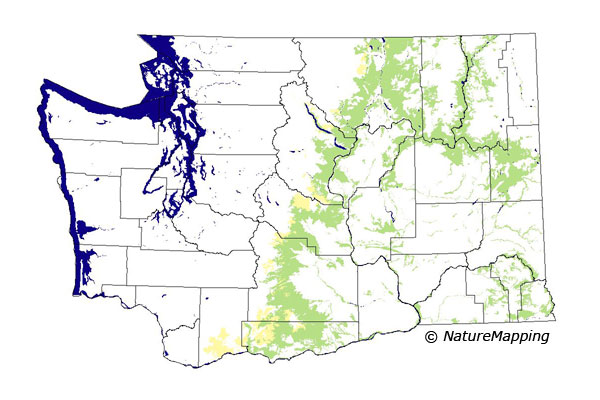 |
Metadata (Data about data or how the map was made)
Legend:
 = Core Habitat
= Core Habitat
 = Marginal Habitat
= Marginal Habitat
Predicted Distribution
Reptiles do not migrate as some birds and mammals, so the colored areas depict
the predicted range for the Western Skink year-round. The habitats were identified
using 1991 satellite imagery, other datasets and experts throughout the state,
as part of the Washington Gap Analysis Project.
Other
maps & Information:
|
Distribution and Habitat Requirements
Eumeces skiltonianus is most abundant in brushy areas where rocks and logs provide opportunities for burrowing
and concealment. It is much less common in
heavily forested areas and is usually found in habitats of scattered shrubs, grasses and talus slopes.
Open oak woodlands in a dry region or where soils are well-drained would seem to be suitable for this species.
Models
All of the Cascades ecoregions, Columbia Basin, Blue Mountains and Northeast Corner ecoregions were selected.
All steppe zones and the Ponderosa Pine and Oak zones were core. The Douglas-fir zone was marginal in the East Central and Southeast Cascades where it was adjacent
to core zones. The Western Hemlock zone in part of the Southwest Cascades was also marginal.
Rivers and riparian areas (areas along rivers and streams), cliffs, shrublands, tree savannas and open-canopy hardwood, hardwood/conifer and conifer forests were
good habitats.
Translated from the Washington Gap Analysis Amphibians and Reptiles Volume by Karen Dvornich
Webpage designed by Dave Lester.